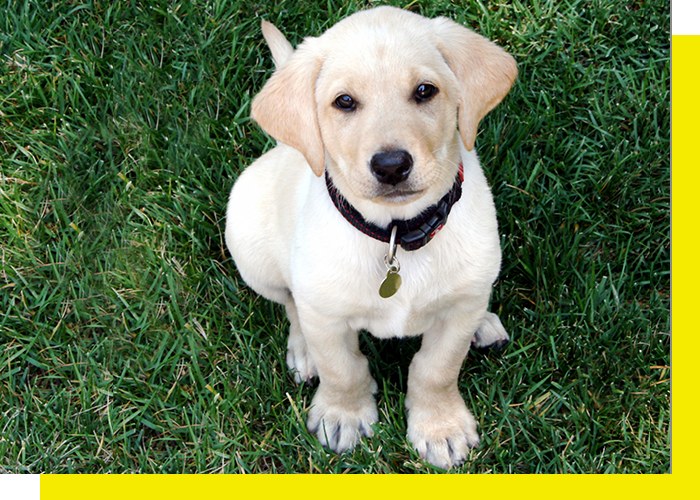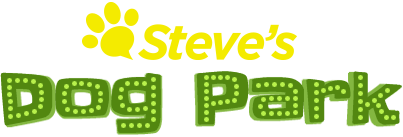Seven Sacred Ways
Master the Basics of Obedience Training
Learn How to Speak Dog!™ With the Seven Sacred Ways
Steve has taught hundreds of dog owners how to get 100% obedience, 100% of the time. The secret is Steve’s Seven Sacred Ways that allow you to tap into your dog’s natural behavior and innate need for a leader. Below are just previews of the Seven Sacred Ways and how mastering them can improve your relationship with your dog, provide them with a more neurologically stable environment, and most importantly, establish yourself as their leader. You can buy How I Learned to Speak Dog! by Steve Lankfer and learn more about how to effectively train your dog for 100% obedience 100% of the time, or you can take a look at the different online dog training programs we offer.

Key Components of the Seven Sacred Ways
- Understand how your dog communicates and establish a pattern of communication with them
- Validate your human/canine connection
- Place yourself neurologically as your dog’s leader
- Lead your dog in a loving way
Master Basic Commands
Understand How Your Dog Communicates
Establish Yourself as Their Leader
A Formula for Training Your Canine
While every dog is different, most dogs struggle with common issues, like biting, begging, jumping, and coming when called. If it feels like there is so much to teach your dog, then you have come to the right place to start. The Seven Sacred Ways help you acknowledge certain areas of growth in your dog training experience and give you the information you need to improve the relationship you have with your pup.
Doorways Are the Difference
One of the keys to a healthy relationship with your pet is understanding your dog’s instinctive reaction to exterior doors, gateways, car doors, and entryways. A dog in its natural state will always hesitate or stop and look to its leader for permission before entering or exiting an exterior doorway.
When a dog approaches and exterior doorways, hesitates, seeks permission to enter or exit, and is then allowed to “pass,” it’s more than an exercise in obedience — it’s a subtle but effective way for us to use this innate canine characteristic to place ourselves neurologically as their canine leader. Amazingly, it literally allows your dog to transfer its pre-wiring from the pack to the surrogate leadership of its new leader: you!
Dining Etiquette: Waiting vs. The Waiter
Dining is a critical relationship-establishing, genetically driven activity. The feeding habits you establish with your dog literally define your relationship with them. How you manage food in the home around your dog does not just define your relationship with your dog, but everyone in your home.
The first leadership responsibility we have to our dogs regarding food is that the dog is not allowed to get fixated on the food, especially in your presence.
A second leadership responsibility we have to our dogs around food is to require the dog to get permission before it eats. To accomplish this, you must teach them to first notice and then acknowledge YOU.
Jumping: Invite Only
We’ve all seen it — it’s one of the most common “problems” that people seek help on. “How do we get our dog to stop jumping on us?” Whether it’s a 150-pound Newfie or a 12-pound Chihuahua, and whether they are greeting us or we’re greeting them, the effect it has on the dog socially and neurologically, and the relationship you have with your dog, is usually the same, and it’s not good. The reality is that there is no dog in a healthy, natural state that would jump on its neurologically recognized leader — it’s just not how dogs are innately and biologically designed.
The only circumstances in which it’s okay for your dog to jump up to you, someone else, on furniture, on a bed, or into your car, is when you have invited them to do so.
Anxiety: Stop Touching Me
The way a dog touches a person intentionally or incidentally sends a message, whether it’s a paw tap, muzzle nudge, the way they lean on you, or the way they back into us. These are all touches with purpose, but the problem is that most of the time, humans miss the touch entirely or misinterpret these touches from what the dog is trying to communicate. Two important tips when attending to your dog’s “touch communication” are:
- Always touch last
- Walk through, never around
To your dog, both of those subtle touching gestures speak to the social order of the pack and where one belongs in relation to the other. They signify surrender and respect.
Biting: What’s Yours is Mine
Food aggression and resource guarding are examples of the consequences that often result from us accidentally telling our dogs they have a social “right” we never intended them to have. It is not their fault that we talk and treat items as if the items “belong” to our dog — it is our fault. It is unhealthy for a dog to think that anything “belongs” to them. It’s ALL yours — the bowl, leash, blanket, bone, and snacks.
A dog is healthier and happier when it has a leader it can trust and service with its attention and abilities. When everything is yours, you’re fostering less anxiety and less stress for your dog because as a leader, you take all that responsibility on, and you determine what the dog has, has access to, or gets to share in.
Begging: Stay Away from the Kill
This is different from “dining etiquette” in that “dining” centers around the actual exchange of food, delivering food, or sharing food specifically intended for the dog. “Keep Away from the Kill” can include your pet’s food, but specifically related to your dog’s proximity in regard to ANY food at ANY time.
The idea of keeping dogs away from the preparation area or “away from the kill” tells them lovingly, in their language, that they are not equal to you in your pack or in your family.
Migrating is Magic
Walking with our dogs, or migrating, is magic. It is magic because it allows the dog to recognize you neurologically as its leader and creates social order. Dogs are prewired to migrate in a certain way, and healthy canines in their natural state will never walk ahead of their recognized leader. When you walk with your dog, you learn to tap into that natural state and establish yourself as the leader that your dog is looking for.
Your dog is looking for a pack and a leader; someone to follow. If you see yourself as their leader, never let your dog walk in front of you. It confuses them and is a disservice to them. If you allow them to walk ahead, you are communicating in a perfectly clear canine that you are either unwilling or unable to lead. The migration exercise is a daily opportunity to help your pet feel like family and show them where they stand.
When you start taking the necessary time to train your pup, you’ll notice that the relationship dynamic between you and your furry companion improves tenfold. It’s hard work, but with the help of Steve and the Speak Dog! Community, anything is possible! Take a look at the Seven Sacred Ways now, or take a look at the virtual and in-person dog training programs we offer.

Join our canine community today!
Steve's Dog Place is the FREE place to talk about dogs, learn about their behavior, brag on your pet and more.
Make a pet profile
Share pics
Meet other dog lovers
Post canine questions
Earn Attaboy! Reward Points and more





